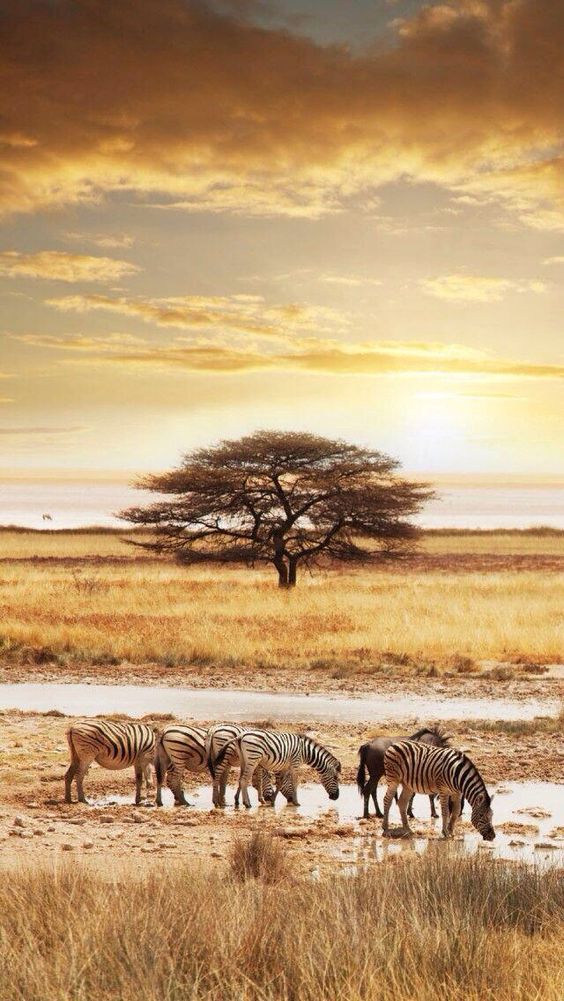 |
| Pond |
A pond is a depression in the ground that is filled with water that remains year round. Ponds range in size from the artificial backyard projects about the size of a bathtub to bodies of water that are about the size of a football field. Ponds support a variety of animal and plant life, and are also used as recreational sites by people.
The difference between a pond and a lake involves size and water depth. A lake is big enough to have at least one beach (sand or rock that slopes down to the water) and contains enough water to generate waves from the wind that blows across the surface of the water.
In contrast, a pond is usually too small for waves of any size to form. At the center of a lake, the water can reach depths of many hundreds, even thousands of feet (meters). A pond, however, is a shallow and still body of water where sunlight can usually reach down to the bottom.
  |
How ponds form
Natural ponds form in shallow depressions where rainwater (including runoff from nearby higher areas) collects. Water from an underground source such as an underground spring can also collect into a pond.
Ponds that people enjoy in their backyard are often artificial, created by preparing the hole and adding water and plants to create a backyard oasis. These ponds can provide relaxation and a habitat for attracting insects, birds, and amphibians (such as frogs and salamanders), even in backyards located in a bustling city.
Other artificial ponds are workhorses. One example is a sewage treatment pond. This type of pond keeps the sewage in a place where the growth of microorganisms can occur in the shallow and warm water.
As microorganisms such as algae grow, they can use some of the materials in the sewage as food. This helps clean the water, and is an example of bioremediation, the process of using natural substances such as bacteria, to clean a contaminated natural resource, such as water.
Life in and around ponds
 |
| life in pond |
Ponds are havens for plants. Because the sunlight is abundant all through the water, plant can grow from every location in a pond. (Plants need sunlight to live as they convert the Sun’s energy into food in a process called photosynthesis.)
Often, the surface of a pond will be almost entirely covered with pond-loving plants such as the water lily and other plants that need higher levels of sunlight or that need direct exposure to air.
Ponds also support various species of animal life, both in and surrounding its waters. Often, the bottom of a pond will be muddy, rather than rocky, and the mud hosts a variety of living creatures, such as crayfish.
The still pond water and muddy bottom are also favorable conditions for the eggs of insects and creatures such as frogs to develop (often attached to the stems or leaves of plants).
For microscopic life such as bacteria and algae, a pond offers plenty of food and the sunlit water provides a suitable temperature for the microscopic cells to grow and divide.
Animals such as deer often use natural ponds as a source of drinking water. Birds feed upon fish that live in ponds. Beavers find the still pond waters a good place to build their lodge.
Ponds are often a source of relaxation and recreation. In warmer times of the year, a pond’s edge can be a place where people picnic or rest outdoors. In the cold winter season of northern climates, ponds can freeze solid and host winter sports such as ice skating.
The fate of ponds
The flow of water into and out of a pond can be slow. This feature, along with its shallow depth, makes a pond vulnerable to contamination. If chemicals that upset the natural composition of the pond are introduced, then the water quality necessary to sustain life can be destroyed.
 |
| Ponds in africa |
Ponds that form in arid (dry) regions where rainfall is briefly heavy then sparse throughout the rest of the year continue a cycle of filling up, then slowly drying. These ponds attract animal life only when water is abundant, which can sometimes cause conflicts with humans.
In some regions of Africa, crocodiles return during the rainy season to newly filled ponds that form near populated villages. Hungry after hibernating (being in an inactive state) the rest of the year, the crocodiles pose a threat to livestock that also drink from the pond, and the people who tend the livestock.
As time passes, the vast majority of ponds will naturally fill in, as sediment (particles of gravel, sand, and silt) and other debris collect in the shallow water